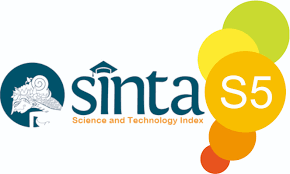The Impact of the Resort-Based Borobudur Highland Master Plan as an Integrated Tourism Area
 Abstract views: 214
,
Abstract views: 214
,
 pdf downloads: 88
pdf downloads: 88
Abstract
Tourism in Indonesia has quite good potential and is one of the sectors that spurs the economy in Indonesia. Development of Borobudur Highland which is included in the five super priority tourist destinations. One of them is the construction of hotels and resorts in the Menoreh Hills, Purworejo Regency, Central Java. The master plan was made as a tourism area plan under the Borobudur Authority Agency (BOB) covering an area of 309 hectares (ha). This master plan consists of five zones, namely the exclusive resort zone, the entry gate zone, the adventure zone, the cultural zone and the extreme zone. There are three themes in the development of this area, namely ecotourism, cultural tourism and adventure tourism. The method used is using descriptive qualitative. Data collection techniques through interviews, observation, and documentation. The data analyzed using the SWOT matrix. The results of this research can increase the existence of tourism objects in the Purworejo and Kulonprogo areas to international class that are sustainable, educative, and provide new breakthroughs that have an impact on investment in employment and local products around the area. The threats that can occur are changes in rainwater catchment areas to become prone to landslides, loss of springs, damage to ecosystems due to logging of trees, and disruption of existing flora and fauna habitats.
Downloads
References
Butler, R.W. (1980). The Concept of a Tourist Area Life Cycle of Evolution: Implications for Management of Resources. Canadian Geographer, XXIV(1), 5-12.
Endarwita, E. (2020). The Influence of Location and Quality of Service on Visitor Decisions of Linjuang Tourism Objects in Lubuk City Attitude. Journal of Economic Appreciation, 8(3), 500–510.
Fitriana, E. (2018). Kum Kum Tourism Park Development Strategy as Educational Tourism in Palangkaraya City. Journal of Geography Education. Studies, Theories, and Practices in the Field of Education and Geography Years, 23, 94–106.
Hariansyah, A. (ND). The Government's Role in Increasing the Desert Tourism Potential of Busung Village, Bintan Regency. The Government's Role in Increasing the Desert Tourism Potential of Busung Village, Bintan Regency.
Hermawan, H. (2017). Development of Tourist Destinations at the Land Site Level Using a SWOT Analysis Approach.
Irianina, B. (2017). Analysis of Tour Operator Competition Strategy (Study on Ourtrip1st Tour Operator in Malang). Brawijaya University.
Kasam, K., & Astuti Permatasari, D. (2017). Master Plan for Integrated Economic Center Areas Integrated with Mount Merapi Disaster Mitigation and Manufacturing and Installation of Economic Center Nameplates in Glagaharjo Village.
Kristanto, T., Muliawati, EC, Arief, R., & Hidayat, S. (2017). Printing SME turnover strategy with a SWOT analysis approach. Sesindo 9, 2017.
Lesmana, R., & Hasbiyah, W. (2019). Analysis Model of Satisfaction and Loyalty of Local Tourists Case Study on Jakarta's Thousand Islands Tourism Object. JIMF (Forkamma Scientific Journal of Management), 2(3).
Malay, SP (2016). Management: Basics, Understanding, and Problems. Jakarta: Earth Script.
Milano, Cladio (2017). Overtourism and Tourismphobia: Global Trends and Local Context. Barcelona: Ostelea School of Toruism & Hospitality.
Pitana, I Gde. (2005). Tourism Sociology, Sociological Study of Tourism Structures, Systems, and Impacts. Yogyakarta: CV. Andi Offset.
Purnama, O., & Badri, H. (2020). The strategy for developing recreational sports at the Puncak Tonang Tourism Object, Lubuk Attitudeing District, Pasaman Regency. Journal of Stamina, 3(12), 841–853.
Rahmasari, A., & Pudjowati, J. (2017). Batu City Tourism Innovation Village Development Strategy with Local Economic Resources Development (Lerd). Develop Journal of Economics and Business Studies Program Feb Unitomo Surabaya, 1(1), 1.
Ramadhan S, Patana P, Harahap A Z. (2014). Analysis of the Suitability and Carrying Capacity of the Mirror Beach Tourism Area, Serdang Bedagai Regency. Medan: University of North Sumatra.
Rizkianto, N., & Topowijono, T. (2018). Application of the concept of community based tourism in the management of sustainable tourist attractions (Study at Bangun Tourism Village, Munjungan District, Trenggalek Regency). Journal of Business Administration, 58(1), 20–26.
Saputra, MR, & Rodhiyah, R. (2016). Tourism development strategy in the Mount Andong area of Magelang. Journal of Business Administration, 5(4), 571–586.
Sari D, Kusumah H, Marhanah S. (2018). Analysis of motivational factors of young tourists in visiting special interest tourist destinations. Bandung: Indonesian University of Education.
Suwantoro, Gamal. 2004. Fundamentals of Tourism. Yogyakarta : CV. Andi Offset.
Copyright (c) 2023 Aisyah Astinadia siregar

This work is licensed under a Creative Commons Attribution-ShareAlike 4.0 International License.
Authors who publish with this journal agree to the following terms:
- The author (s) keeps copyright on any article.
- The author grants the journal, right of first publication with the work simultaneously licensed under a Creative Commons Attribution License that allows others to share the work with an acknowledgement of the work’s authorship and initial publication in this journal.
- Authors can enter separate, additional contractual arrangements for the non-exclusive distribution of the journal’s published version of the work (e.g., post it to an institutional repository or publish it in a book), with an acknowledgement of its initial publication in this journal.
- Authors are permitted and encouraged to post their work online (e.g., in institutional repositories or on their website) prior to and during the submission process, as it can lead to productive exchanges, as well as earlier and greater citation of published work.
- We distributed the article, and any associated published material under the Creative Commons Attribution-Share alike 4.0 International License




